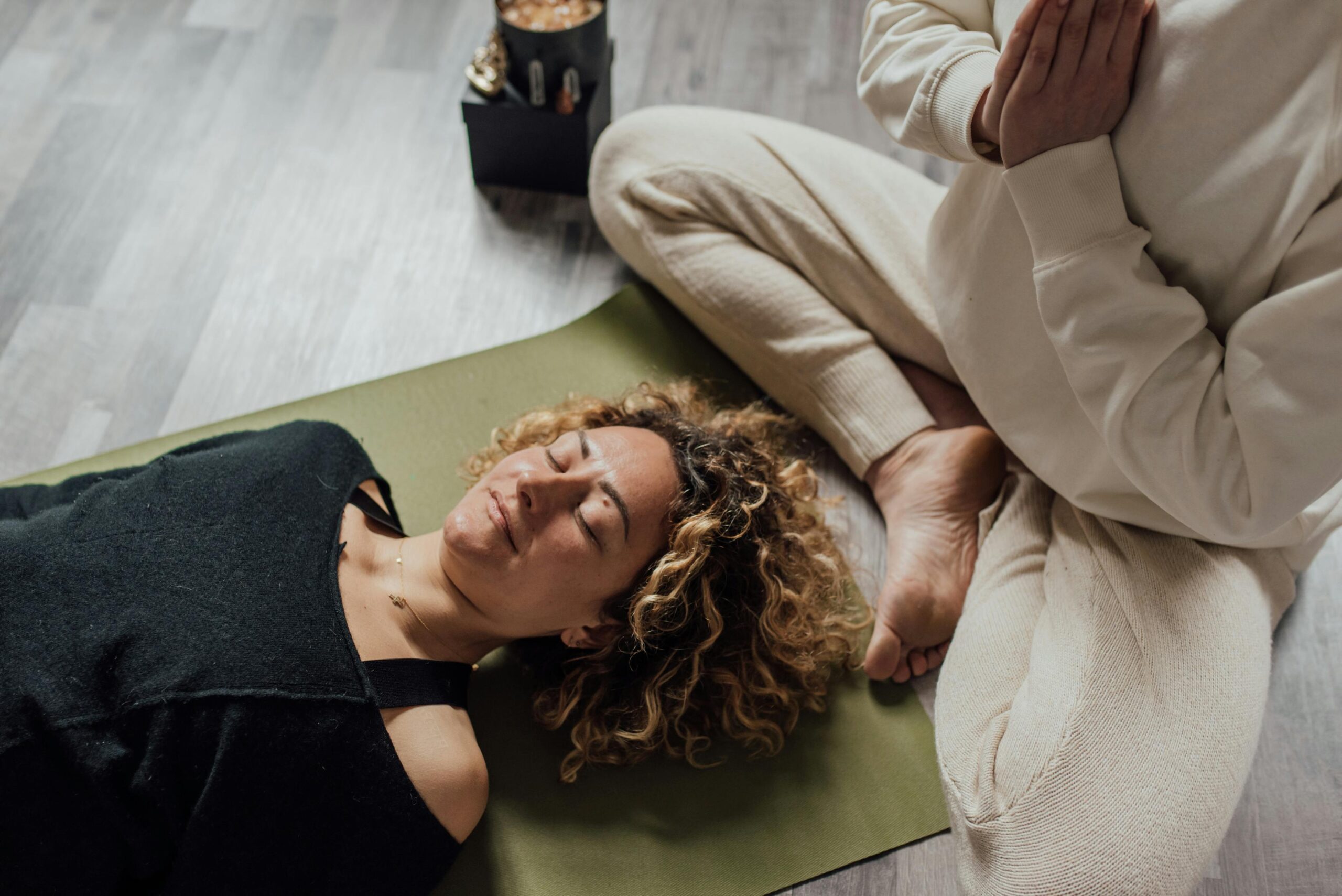What is Vipassana Meditation? A Comprehensive Guide to an Ancient Practice
If you’ve ever wondered, “What is Vipassana meditation?”, you’re not alone. Vipassana is one of the oldest forms of meditation, originating from India over 2,500 years ago. This powerful meditation technique, often called “insight meditation,” is all about cultivating deep awareness and understanding of the present moment. It helps practitioners observe their thoughts, sensations, and emotions without judgment, leading to greater clarity, peace, and mental freedom.
In this guide, we’ll explore what Vipassana meditation is, how to practice it, and the many benefits this ancient practice can offer. Whether you’re new to meditation or have been practicing for some time, this article will help you understand and integrate Vipassana into your life.

What is Vipassana Meditation?
Vipassana meditation is a mindfulness-based practice rooted in the Buddhist tradition. The word “Vipassana” means “clear seeing” or “insight,” and the technique aims to help you observe your thoughts and sensations as they truly are, without attachment or aversion. The practice teaches you to stay present in the moment, fostering greater self-awareness and emotional balance.
At its core, Vipassana meditation is about cultivating mindfulness—the art of observing your body, thoughts, and emotions with equanimity, seeing them without judgment or reaction. This clarity of mind leads to insight into the nature of suffering and the path to freedom.
The History and Origin of Vipassana Meditation
Vipassana meditation has ancient roots in India, with origins tracing back more than 2,500 years to the teachings of the Buddha. The practice was designed to help individuals attain enlightenment by directly experiencing the impermanent nature of the mind and body.
The technique was passed down through generations of Buddhist teachers. One of the key figures in bringing Vipassana meditation to the modern world was Sayagyi U Ba Khin, a Burmese teacher who passed on the teachings to his student, S.N. Goenka. Goenka then popularized the practice by establishing meditation centers around the world, offering 10-day Vipassana meditation courses that teach this powerful technique.
Today, Vipassana centers offer meditation retreats where individuals can immerse themselves in the practice, often with a commitment to ten days of silent meditation.
How Does Vipassana Meditation Work?
To understand how to practice Vipassana meditation, it’s essential to grasp its basic technique. Here’s an overview:
- Find a Quiet Space: Vipassana is best practiced in a quiet, distraction-free environment. Begin by sitting in a comfortable, upright position, either on the floor with a cushion or on a chair.
- Focus on Your Breath: Start by paying attention to your natural breath. Feel the sensation of air entering and leaving your nostrils. This serves as your anchor, helping you stay focused in the present moment.
- Observe Sensations in the Body: As you focus on your breath, bring awareness to the sensations in your body. In Vipassana, every bodily sensation—whether pleasant, unpleasant, or neutral—is an object of meditation. Observe these sensations without reacting or trying to change them.
- Let Thoughts and Emotions Pass: As you meditate, thoughts, emotions, and memories will naturally arise. Instead of engaging with them, simply observe them as they come and go. This practice of non-attachment helps you see the impermanent nature of mental phenomena.
- Cultivate Equanimity: The goal of Vipassana meditation is to develop equanimity—mental calmness and balance—by observing sensations without reacting with attachment or aversion.
With regular practice, Vipassana meditation helps you develop a deeper understanding of your mind and body, creating a foundation for inner peace.
The Benefits of Vipassana Meditation
The practice of Vipassana meditation offers numerous benefits, ranging from improved mental wellness to emotional balance. Here are some of the key advantages:

1. Stress Relief and Reduced Anxiety
One of the most significant benefits of Vipassana meditation is its ability to reduce stress and anxiety. By observing your thoughts and sensations without judgment, you cultivate a mindset of acceptance, which helps to dissipate stress. This mindfulness practice encourages a shift in perspective, enabling you to handle life’s challenges with greater calmness and clarity.
2. Promotion of Mental Wellness
Vipassana meditation fosters mental wellness by increasing awareness and cultivating a deep connection to the present moment. Research shows that regular meditation can reduce negative thinking patterns, improve emotional regulation, and enhance overall psychological well-being. Through mindfulness, you learn to observe your thoughts and emotions rather than become overwhelmed by them.
3. Brain Plasticity and Mental Clarity
Practicing Vipassana regularly can improve brain flexibility, also known as brain plasticity. This refers to the brain’s ability to change and adapt over time. Studies have shown that mindfulness meditation can enhance cognitive functions like memory, attention, and focus, contributing to better mental clarity. The deeper you practice, the more resilient your mind becomes in handling daily stresses.
4. Aiding in Addiction Recovery
Vipassana meditation has also been shown to help in addiction recovery. By cultivating mindfulness and increasing self-awareness, individuals can break the cycle of craving and attachment that fuels addiction. Through this process, practitioners gain insight into their habitual patterns of thought and behavior, helping them make healthier choices and overcome addictive tendencies.
How to Get Started with Vipassana Meditation
If you’re new to Vipassana meditation or looking to deepen your practice, here are some practical steps:
1. Start with Guided Sessions
For beginners, guided Vipassana meditation can be incredibly helpful. Listening to a teacher guide you through mindfulness exercises will help you stay focused and provide structure to your practice. Many meditation centers offer free online guided sessions, or you can find resources like apps or YouTube videos to help you get started.
2. Practice Consistently
Like any skill, meditation requires consistency. Begin by setting aside 10 to 20 minutes each day to practice Vipassana. Over time, you can gradually increase the duration as your comfort level with the practice grows.
3. Attend a Vipassana Retreat
For those looking to deepen their practice, attending a Vipassana meditation retreat is an excellent way to immerse yourself in the technique. These silent retreats typically last for 10 days and offer an intensive, distraction-free environment in which to deepen your understanding of Vipassana meditation.
4. Walking Meditation
Walking meditation is a key component of many Vipassana retreats. This practice involves walking slowly and mindfully, paying attention to each step and your breath. It’s an excellent way to cultivate mindfulness in movement, providing a balance between sitting and active meditation.

Conclusion: Discover the Peace of Vipassana Meditation
So, what is Vipassana meditation? At its core, it’s a powerful tool for developing mindfulness, self-awareness, and inner peace. By learning to observe your thoughts, emotions, and physical sensations without judgment, you can create greater clarity, reduce stress, and cultivate a balanced mind.
Whether you’re just starting or looking to deepen your practice, Vipassana offers a pathway to profound mental clarity and peace. With regular practice, you can learn to see things as they truly are and experience the transformative power of mindfulness in your everyday life.

I have tried this type of meditation before, but I never realized it was called Vipassana meditation. It sounds pretty basic, but for me, it is the hardest thing to do, as the mind is a busy thing and it is hard to relax and not think too much, as well as let things pass through your mind without any emotional attachment.
I think I am going to need a lot of practice before I get good at this. Any advice on speeding up the process?
Hi Michel
I completely understand—Vipassana can be quite challenging, especially because it requires such a level of mindfulness and detachment from your thoughts and emotions. The mind naturally wants to engage with everything, and it can be difficult to simply observe without reacting. But you’re already on the right track by recognizing that it takes time and practice. Here are a few tips to help ease the process:
Start with short sessions: Instead of diving straight into long sessions, try starting with just 10-15 minutes of practice. Gradually increase the time as you become more comfortable.Focus on the breath: In Vipassana, observing the breath is often the anchor to bring you back when your mind starts to wander. Try to maintain a gentle, non-judgmental focus on your inhalations and exhalations. When thoughts arise, simply notice them without attachment and return your attention to the breath.Be kind to yourself: It’s very common for the mind to get distracted. When this happens, gently acknowledge that your mind has wandered and bring your focus back to the present moment without any self-criticism.Practice daily: Consistency is key. Even if it’s just a few minutes every day, practicing regularly helps strengthen your mindfulness muscle. Over time, it becomes easier to detach from thoughts and simply observe them.Use guided sessions: If you find it hard to meditate on your own, there are many guided Vipassana sessions and recordings available that can help you stay focused and provide structure to your practice.Patience is key: Vipassana is a deep and transformative practice. It’s normal to feel like progress is slow, but with time, you’ll notice shifts in how you respond to your thoughts and emotions.
Remember, it’s not about “speeding up” the process—it’s about consistently showing up for yourself and allowing the practice to unfold naturally. Best of luck on your journey!
Kindest regards
Alan
Vipassana Meditation sounds very enlightening, and this article is very educational and informative. You have explained the process and the goals of Vipassana Meditation very well. I personally meditate in prayer but still use some of the same calming techniques. I appreciate this article and how it might help people with stress related problems. I wish you the best of luck here at WA!
Thank you so much for your thoughtful comment and kind words! It’s wonderful to hear that you found the article on Vipassana Meditation enlightening and well-explained. Your approach of meditating in prayer while incorporating calming techniques truly reflects the versatility and adaptability of mindfulness practices.
It’s fascinating how Vipassana and prayer both encourage self-reflection and a sense of inner calm. Have you ever considered combining elements of Vipassana, such as body scanning or focusing on breath, with your prayer routine? It could offer an interesting blend of mindfulness and spiritual connection.
Thank you again for sharing your perspective, and best wishes on your own journey of meditation and prayer!